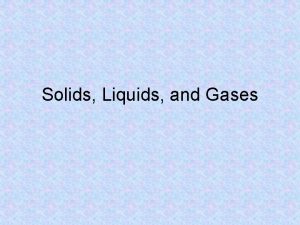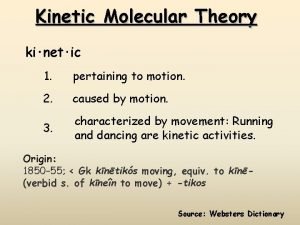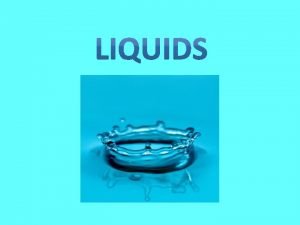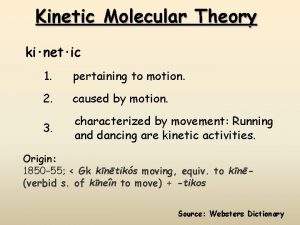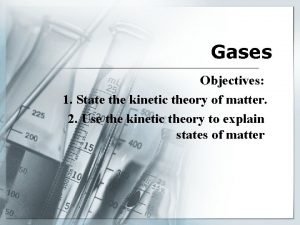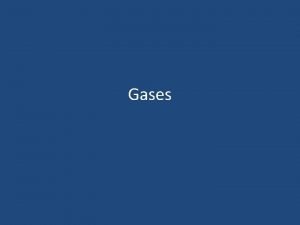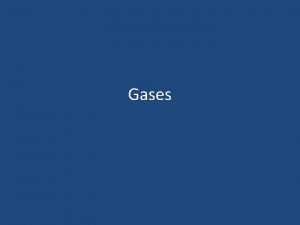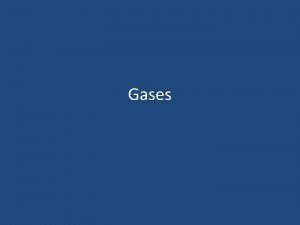Solids Properties of Solids and the Kinetic Molecular








- Slides: 8

Solids

Properties of Solids and the Kinetic. Molecular Theory • The particles of a solid are more closely packed than those of a liquid or a gas. • All interparticle attractions exert stronger effects in solids than in the corresponding liquids or gases.

• Attractive forces tend to hold the particles of a solid in relatively fixed positions. • Solids are more ordered than liquids and are much more ordered than gases.

• Two types of solids: crystalline and amorphous. • Most solids are crystalline: consist of crystals (orderly, geometric, repeating pattern). • An amorphous solid is one in which the particles are arranged randomly.

• Definite shape and volume – Solids can maintain a definite shape without a container. • Solids have definite volume because their particles are closely packed together.

• Definite Melting Point (crystalline solids) – Melting is the physical change of a solid to a liquid by the addition of energy as heat. • The temperature at which a solid becomes a liquid is its melting point. • Amorphous solids have no definite melting point.

• Amorphous solids are sometimes classified as supercooled liquids, which are substances that retain certain liquid properties even at temperatures at which they appear to be solid. Hole in the Clouds? This forms when clouds composed of supercooled liquid water below freezing are affected by airplane exhaust. The airplane exhaust causes the supercooled liquid to become ice causing a hole in the clouds.

• High Density and Incompressibility – In general, substances are most dense in the solid state, due to closely packed particles. • For practical purposes, solids can be consider incompressible. • Low Rate of Diffusion – The rate of diffusion is millions of times slower in solids than in liquids.


